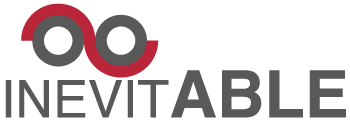E-mail: info@inevitable-project.eu
E-mail: info@inevitable-project.eu
Training materials
- Home
- Training materials

To ensure that successful project results are fully accepted and utilized by industrial process industry personnel, training materials have been created for new and existing training programs. New knowledge, technology, best practices and expertise were gathered from the consortium partners. The collected knowledge was thoroughly edited and reviewed. The collection of collected materials is available here.
The work is reported also in Deliverable D10.5.
The material covers a range of analysis methods for image material from industrial process surveillance data. After a brief introduction of the example use case from steel industry to illustrate the approaches, the basic methodology for a robust detection of a region of interest (ROI) in image data with Matlab is presented, discussing several possibilities ranging from simple thresholding to more advanced averaging and smoothing techniques, as well as eroding and the fitting of the smallest square into a ROI. A second section covers particle image velocimetry (PIV) applications to industrial process videos within the tools Matlab and Labview, showing the extraction of velocity vectors and possibilities of subsequent statistical analyses. In a third chapter, machine learning algorithms and the application of convolutional neural networks to industrial image data are discussed using Python, starting with a general introduction to artificial neural networks (ANNs), considering image pre-processing strategies and ultimately presenting the application of image classification for industrial process state characterization.
Document pdf DOI: 10.13140/RG.2.2.26686.36162
Document ppt DOI: 10.13140/RG.2.2.19320.52482
In the digitalization era, mathematical modelling represents a field with growing potential. Soft-sensing, process monitoring, fault detection, control design and simulation are just a couple of possible applications, where process models are mandatory for their development. To obtain an appropriate process model, two different approaches are possible, i.e., theoretical modelling, and data-based modelling, also known as the identification. For the first, good knowledge of the process’ background and understanding of all physical phenomena is needed. For the second, a fair amount of input/output data sets is needed, to estimate the process’ structure and obtain the model’s parameters. In practice, both approaches are usually combined. Theoretical modelling is used to obtain the structure of the models, while identifications is used to determine the structure’s parameters. Moreover, input/output data is necessary to verify and validate the built models. In this training material basic approaches to modelling of dynamic systems are presented, together with some practical examples of model use. It covers the first principle approaches based on fundamental laws, i.e., equilibrium of mass, energy and momentum. The use of this principles is shown on modelling electrical, mechanical, hydraulic, and thermal processes. Furthermore, simple examples are presented to demonstrate the use of the shown techniques.
Document pdf DOI: 10.13140/RG.2.2.28364.08320
Document ppt DOI: 10.13140/RG.2.2.26031.41126
In the digitalization era, mathematical modelling represents a field with growing potential. Process models are used more and more to support the physical processes, with an aim to improve their Key Performance Indicators (KPIs). One of the areas, where process models show their potential is the area of Digital Twins. Each digital twin needs to have some sort of process information, i.e., a model, which can be represented in different forms. The aim of digital twins is to represent a real process in a simulation environment, where these twins can be used for various applications, such as: estimation of the unmeasured process values, fault detection, estimation of process efficiency, operator support and training etc. In the scope of this training material, a design and development of mathematical models for the EAF processes is presented. The material covers both theoretical and data-based approaches. The first approach is used to develop a process model of a complete EAF operation, covering all the crucial phenomena during the steel-recycling process. The second approach is used to obtain the parameters of the theoretical model structure, as well as for developing a data-based EAF model, which relates to only a few crucial process values, such as the bath temperature and dissolved oxygen content in the bath during the refining stage of the EAF operation.
Document pdf DOI: 10.13140/RG.2.2.13264.58881
Document ppt DOI: 10.13140/RG.2.2.12609.63847
Nowadays, the process industry is facing several challenges such as shortage in resources (raw materials, energy) and increasing prices as well as environmental constraints with stringent legislative restrictions. Supply dependencies on the raw material market as well as the pressure to generate products with maximum quality and lowest possible costs makes it more difficult for the companies in the process industry to stay competitive.
Out of this reason, the plant operators strive to run their processes in a resource and quality optimal way. In this task, camera-based monitoring systems combined with dynamic process models can provide valuable support, to achieve a more thorough control of the process, e.g., for those processes where liquid melts are treated, e.g. the steel or the aluminum manufacturing process.
The training material gives an overview over camera systems and camera-based monitoring by means of image analysis systems. It then puts exemplarily special focus on the stirring monitoring during Ladle Furnace treatment for liquid steel refining, explaining the applied hardware and software devices. The dynamic process models are introduced in general with their functionality and possible applications in process monitoring and control. As example, the process model for monitoring and control of desulphurization in liquid steel refining will be described in more detail. The combination of camera-based monitoring and process models for the development of online advisory systems is finally explained.
The training material is targeted to engineers and operators in industry, mainly, but not exclusively, for the steel and metal producing industry. It includes a conclusion, outlook, and transferability assessment, as the methods are not limited to steel industry and to the process steps presented in the training material.
Document pdf DOI: 10.13140/RG.2.2.20788.12161
Document ppt DOI: 10.13140/RG.2.2.34420.01921
Process industry is a key player in the European industry, having a big potential for the implementation of digital and cognitive systems. Process industry employs a high number of workers and is a high energy consuming sector. The development and implementation of a digital infrastructure brings significant advantages in terms of raw materials and energy consumptions as well as in productivity improvement. The present training module aims at defining key aspects for a successful implementation of a digital and cognitive system and the deployment of its potential through the organization.
The module describes different stages starting from the digital audit that identifies specification and requirements for digitalization, benchmarks the situation of all process stages in terms of digitalization and stablishes an action plan for implementation.
The next implementation stage deals with capture and display of process parameters, the module introduces how this is performed by means of new sensors, to capture variables identified as critical in previous audit. Specific explanations are given of how the definition of a correct storage, data distribution and traceability are critical to assure efficiency in data quality and visual useful representation.
Additional information is given on how data management is another keystone to prepare reports with data and make data useful for the organization in order be understood and efficiently used in final decision making.
The final explanation deals with how to build an autonomous predictive system in order to generate corrective actions in real time before an anomalous situation if generated. Examples of some real cases are incorporated in the end for a visual understanding of achievable goal in real companies.
Document pdf DOI: 10.13140/RG.2.2.16620.03206
Document ppt DOI: 10.13140/RG.2.2.20998.24642
Several methods of offline investigations, such as light optical microscopy (LOM), scanning electron microscopy (SEM), chemical extraction (CE), and electrolytic extraction (EE), have been developed in recent years to evaluate the characteristics of non-metallic inclusions (NMIs) inside the steel. However, the investigation results could only be obtained after several hours, days, or months. It means that some efforts need to be made to characterize the NMIs during the actual steelmaking operations. To solve this problem, several rapid and online monitoring methods for evaluating NMIs based on composition analysis have been developed. Combining online and offline techniques can give vital information about the NMIs characteristics. In addition, online investigations of liquid steels coupled with practical thermodynamic calculations can be helpful to develop a predictive tool for efficiently monitoring the steelmaking processes. A case study from the Inevitable project is demonstrated to showcase the importance of the concept.
Document pdf DOI: 10.13140/RG.2.2.12399.51367
Document ppt DOI: 10.13140/RG.2.2.21837.10725
The objective of calcium treatment during secondary steelmaking is to improve product performance through inclusion modification. Using calcium injection, solid alumina and spinel inclusions can be modified into liquid globular calcium aluminate inclusions. It was found through experiments that the presence of liquid globular inclusions in the liquid steels is one of the indications for successful calcium treatment. However, to modify oxide and sulfide inclusions, understanding the “liquid phase stability” of non-metallic inclusions is necessary. This can be understood by thermodynamic assessments of the calcium treatment process. The operator should generally consider a parametric “liquid window” to predict the amount of liquid and solid inclusions for different calcium injections. With the optimum modification of non-metallic inclusions, problems of nozzle clogging in casting operations do not occur. A case study associated with the Voestalpine steel plant was demonstrated to justify the above concept.
Document pdf DOI: 10.13140/RG.2.2.34209.89443
Document ppt DOI: 10.13140/RG.2.2.10931.91688
The prepared training material is split into three connected topics, covering the basics of digitalization, communication, industrial IoT, and cases of use. The first topic introduces the digitalization topics, challenges facing companies on the path of the digitalization. It covers industrial communications, security, and safety challenges. The data infrastructure part focuses on the Industrial Internet of Things (IoT) platform and the introduction to the Siemens MindSphere platform. The second topic covers the data infrastructure part and the introduction of Industrial IoT, as well as the basics of the Siemens MindSphere and its components. The third topic focuses on the introduction of the methodology developed in the scope of the Workpackage 5 of the INEVITABLE project. It presents the steps which are taking place in all of the stages, pointing out the most important aspects. It also covers the tool Edge Streaming Analytics, along with other components, that make up the solution.
Document pdf DOI: 10.13140/RG.2.2.23488.20487
Document ppt DOI: 10.13140/RG.2.2.31064.57604

